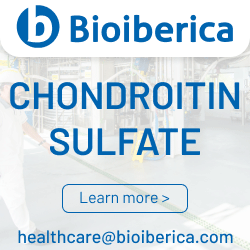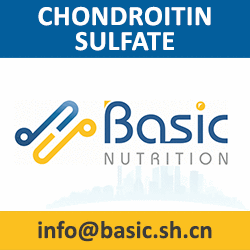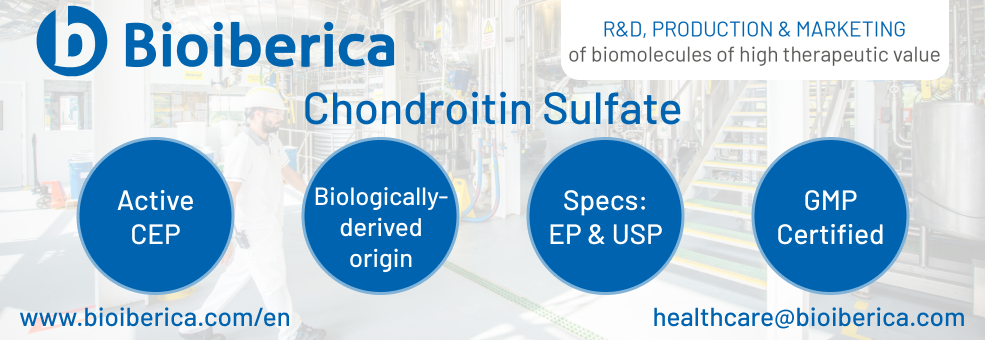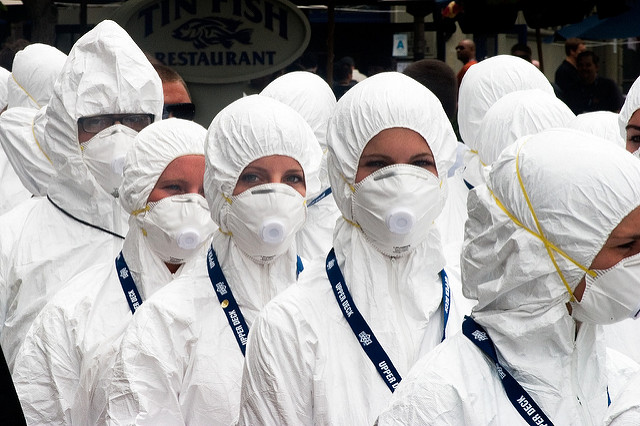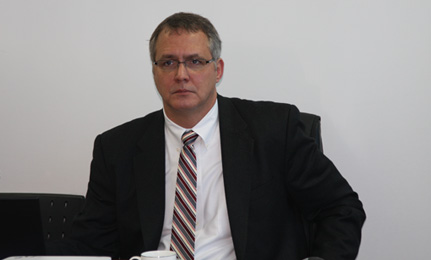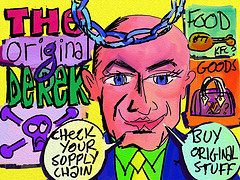This week, Phispers brings you news on an apex court ruling in Canada that overhauls its patent law and makes it more NAFTA-friendly. While
a new director-general took office at the WHO, malware Petya stalled operations
at Merck. We also report on a warning letter to a heparin testing laboratory in
China, and how the FDA has proposed a delayed enforcement of new serialized
product identifier on drug packages by one year.
Heparin testing laboratory in China receives FDA warning
letter
In early 2008, ‘fake’ heparin-based medicines caused deaths in the US and other parts of the world. In a bid to realize cost-saving opportunities, Chinese producers had added a potentially toxic substance — known as ‘over-sulphated chondroitin sulphate’ (OSCS) — to pharmaceutical grade heparin.
The counterfeit product was cheaper to manufacture, did not offer
the intended therapeutic effect and was difficult to differentiate from heparin
using the existing test methods.
After the 2008 heparin crisis, the analysis of heparin and
heparin-related drugs has become of prime importance to the FDA.
Shandong Analysis and Test Center, a contract testing lab
situated in Shandong in China that analyzes samples of heparin and
heparin-related drugs for the presence of OSCS using nuclear magnetic resonance (NMR)
spectroscopy, received a warning letter after a January 2017 FDA inspection.
The inspectors found the laboratory routinely failed to establish
analytical system suitability while testing samples for OSCS. In one instance,
when the system suitability test failed, the lab did not investigate why the
equipment failed system suitability for detection of OSCS. It also did not
determine the reliability of other OSCS tests conducted prior to the system
suitability failure.
The warning letter said: “System suitability testing determines whether requirements for precision are satisfied and ensures the NMR spectrometer is fit for the intended testing before analyzing samples. It is critical that your system be demonstrated as suitable for detecting OSCS contamination in heparin to avoid the possibility of samples erroneously passing when an instrument is not working properly.”
In addition, analysts were unable to retrieve original electronic
data for analysis of heparin and heparin-related drug samples. During the
inspection, access to information necessary to conduct the inspection was also restricted.
FDA proposes delayed enforcement of DSCSA (track and trace
/serialization)
The US Food and Drug Administration (FDA) has proposed a delayed
enforcement of new serialized product identifier on drug packages and
verification requirements by one year. This draft guidance, published by the FDA last week,
could have major ramifications for the industry.
As part of the Drug Supply Chain Security Act (DSCSA) requirements, referred within some parts of the industry as either ‘track and trace’ or ‘serialization’, all drug manufacturers are required to begin affixing or imprinting a product identifier to each package and homogenous case of a product intended to be introduced in a transaction into commerce no later than November 27, 2017. Repackagers are required to do the same no later than November 27, 2018.
In the draft guidance, the FDA says it does not intend to take
action against manufacturers who do not affix or imprint a product identifier
to each package and homogenous case of products before November 26, 2018.
“This represents a one year delay in enforcement of the requirement for manufacturers to affix or imprint product identifiers. For the products that manufacturers introduce in a transaction into commerce before November 26, 2018, without a product identifier, FDA also does not intend to take action against manufacturers who do not use a product identifier to verify such product at the package level,” the draft guidance said.
“Almost all of the manufacturer requirements set to go into effect on November 27, 2017 would not be enforced” due to this proposed one year delay, an industry analysis said.
A delayed rollout will, however, still require “manufacturers to provide the transaction information, transaction history and transaction statement in electronic format only, except when selling directly to a licensed healthcare practitioner who is authorized to prescribe medication under State law, or to other licensed individuals who are under the supervision or direction of such a practitioner who dispenses product in the usual course of professional practice,” it added.
BASF announces significant enhancements in ibuprofen manufacturing capacity
BASF
is building a new plant to manufacture the active pharmaceutical ingredient (API) — ibuprofen — in Ludwigshafen, Germany. The plant is scheduled to come onstream in 2021.
The company is also expanding its ibuprofen capacities at its production site in the US, situated at Bishop (Texas), to fill the existing supply gaps for ibuprofen in the market. The expansion will come onstream in early 2018. The company is investing around US$ 226 million (€200 million) in both these projects.
Ibuprofen is used to treat pain, fever, and inflammation. The Ludwigshafen plant will be “the first world-scale ibuprofen plant in Europe,” Dr Markus Kamieth, member of the board of executive directors, BASF SE, said. With this investment, BASF aims to ensure high supply security for its customers and meet the growing global demand for the API.
After Sanofi, GSK forays into artificial intelligence by tying up with Exscientia
An increasing number of companies on both sides of the Atlantic
are applying artificial intelligence (AI) to drug research. The latest to join
the bandwagon is British drug major GlaxoSmithKline — the company unveiled a US$ 43 million strategic drug discovery deal with
Exscientia on July 1.
As per this tie-up, Scotland-based Exscientia will leverage its
AI-enabled platform with the expertise of GSK, in order to discover novel and
selective small molecules for up to 10 disease-related targets. In May,
Exscientia had signed a similar deal with Sanofi.
The AI-based drug discovery process harnesses modern supercomputers and
machine learning systems to predict how molecules will behave, and how they
could make a useful drug, thereby saving time and money on unnecessary tests.
AI systems already play a central role in other high-tech areas such as the
development of driverless cars and facial recognition software.
Besides Sanofi and GSK, Merck
and Johnson & Johnson are also exploring the potential of AI to help streamline the
drug discovery process.
Andrew Hopkins, CEO of Exscientia, said: “This agreement with GSK is the second we have signed in recent months with a top global pharma company. The alliance provides further validation of our AI-driven platform and its potential to accelerate the discovery of novel, high-quality drug candidates.”
However, big pharma is treading cautiously when it comes to AI. “It's still to be proven, but we definitely think we should do the experiment,” John Baldoni, GSK's head of platform technology and science, said.
Canada overhauls patent law; multinationals favored over startups
A Supreme Court
ruling in Canada last week overhauled its patent law. And now, the law will largely favor multinational patent holders over Canada’s own startups. According to news reports, the step may ease North American Free Trade Agreement (NAFTA) talks, due to begin in August.
This decision, aimed at reshaping intellectual property rights in
Canada, effectively lowers the bar to receive and defend a patent in the country,
tilting the playing field in favor of existing patent holders.
However, though the larger firms may have lauded the ruling, it threatens to hurt the domestic technology sector and undercut Prime Minister Justin Trudeau’s vision of reshaping Canada as a leader in innovative industries.
The Supreme Court ruled that a current standard, known as the “promise doctrine,” goes too far, because it allows for patents to be invalidated if an invention doesn’t do any of the things it promised.
The decision resolves an issue that had been flagged by the US in the NAFTA talks. The Supreme Court decision came after another ruling last week that ordered Alphabet’s Google to remove search results from websites offering goods that infringe on intellectual property.
The ruling “removes a key irritant,” Michael Geist, a law professor at the University of Ottawa, said in a written statement. “Combined with the Google case from earlier this week, Canada is now home to some of the toughest anti-piracy laws in the world along with some of the friendliest patent rules for patent holders,” Geist added.
Merck’s operations shutdown due to computer malware Petya
Last week, Petya/NotPetya cyberattack hit Merck
and several other companies. The cyberattack, known as ransomware, works by locking users out of
their computers and demanding a ransom in order to regain entry.
New Jersey-based Merck made the announcement of the
attack last week. Internal communications instructed employees to disconnect mobile devices from the network and refrain from posting on
social media.
The core technology in Petya is called ETERNALBLUE. According to news reports, it was developed by American spy agencies. It relied on bugs in Windows that Microsoft presumably wasn’t aware of until earlier this year.
Merck missed two critical opportunities earlier this year to
inoculate itself from this vicious cyberattack. In March, Microsoft had issued a critical bulletin advising IT
administrators of the steps needed to prevent hackers from using the
ETERNALBLUE technology to gain unauthorized access into their networks.
Then in May, the first global attack based on this exploit, known
as WannaCry, had spread widely, shutting down 16 hospitals in the UK. In the
aftermath of WannaCry, Microsoft issued yet another patch. In fact, most
prominent security firms worldwide asked companies to immediately employ these
crucial patches to prevent unauthorized access to private networks.
A Merck spokesperson said: “We have made good progress in our response to the June 27 global cyber attack…Government authorities working with us have confirmed that the malware responsible for the attack contained a unique combination of characteristics that enabled it to infect company systems despite installation of recent software patches.”
The Petya attack hit at least five other countries. In Ukraine,
the attack was being described as the biggest in the country's history.
Tedros Adhanom Ghebreyesus takes office as the new WHO director-general
On July 1, Dr Tedros Adhanom Ghebreyesus took over as director-general of the World Health Organization
(WHO). He succeeded Dr Margaret Chan.
Tedros was elected on May 23, 2017, by vote of WHO member states at the 70th World Health Assembly. The director-general is WHO’s chief technical and administrative officer and oversees the policy for WHO’s international health work.
This is the first time that member states at the World Health
Assembly selected a director-general
from among multiple candidates. In previous elections, a single nominee was
forwarded by the WHO executive board to the World Health Assembly for
consideration, a statement said.
Prior to his election as the director-general of WHO, Tedros served as minister of foreign affairs of Ethiopia from 2012 to 2016. He also served as the minister of health of Ethiopia from 2005 to 2012 where Tedros led a comprehensive reform effort of the country’s health system, including the expansion of the country’s health infrastructure.
“The right of every individual to basic health services will be my top priority. I will champion mechanisms to meaningfully listen to, learn from and engage people and communities — including migrant, displaced and disabled individuals; people living in rural, urban slum and low-income areas; and other vulnerable populations,” Tedros said in his vision statement.
Impressions: 2891
Compliance Wrap: Heparin quality concerns re-emerge in China, more trouble at Sun Pharma & Wockhardt
PharmaCompass looks at recent compliance concerns highlighted by the US FDA at drug manufacturers like India’s Sun Pharmaceuticals, Srikem Labs, Wockhardt’s UK subsidiary and China’s Dongying Tiandong. This is not the first time most of these companies have been on the regulatory radar for exactly the same manufacturing lapses.Sun
PharmaSun Pharmaceutical Industries Ltd’s efforts to exorcise the compliance troubles which plagued Ranbaxy for almost a decade indicate that more work needs to be done. News reports
of the recent inspection
at the facility based in Mohali (Punjab) state that the US FDA Form 483 issued had seven observations of shortcomings in manufacturing standards at Sun Pharma’s formulations plant in Mohali.The site,
which belonged to Ranbaxy Laboratories, used to ship generic versions of
the popular cholesterol drug atorvastatin to the US.The FDA
investigators found that the company failed to thoroughly review the reasons
for an out-of-specifications (OOS) batch of drugs and that the laboratory
records did not include complete data derived from all tests necessary to
assure compliance with established specifications and standards.In addition, appropriate controls were not exercised over computers as “laboratory analysts have the ability to change instrument settings including date and time on the instrument”.Ranbaxy had
been acquired by Sun Pharma as part of a US $ 4 billion deal completed last year. Ranbaxy’s manufacturing sites in India at Paonta Sahib, Dewas, Toansa and Mohali were put under an import alert as part of drawn-out
investigations. In 2013, Ranbaxy paid US $ 500 million to settle the dispute
with the US FDA.Besides
struggling to resolve compliance issues at the Ranbaxy facilities, Sun
Pharma is also contending with compliance issues at its own manufacturing facilities at Halol and Karkhadi in Gujarat. Regulatory issues, particularly at its Halol unit in Gujarat, have dented the company’s sales in the US. In 2015-16, its US sales were US $ 2.07 billion, down 8 percent from the previous year.Srikem Labs, IndiaAn FDA
inspection at Srikem Laboratories’ Taloja facility in Maharashtra (India) uncovered data-integrity concerns such as inconsistently-dated
laboratory records, where sample testing reports were available days before the
record log showed that the sample had even entered the laboratory.Investigators also found a printed chromatogram which was dated August 26, 2014, while the data saved to the computer system from the analysis was dated December 28, 2013 — nearly eight months before the date on the printed chromatogram.In another instance, a stability testing result was stated to be in compliance. However, when the “investigator asked you to reprocess the chromatograms using appropriate integration parameters, the results were out-of-specification for unknown impurity content,” the FDA letter said.“Your quality system does not adequately ensure the accuracy and integrity of data to support the safety, effectiveness, and quality of the drugs you manufacture. We strongly recommend that you retain a qualified consultant to assist in your remediation,” the letter said.Wockhardt’s UK subsidiaryWockhardt’s UK subsidiary CP Pharmaceuticals
received an FDA warning letter for
inspections conducted in October 2015. The investigators found poor practices
during aseptic set-up and filling and repeated failure to create a robust
personnel monitoring program of its aseptic production operation. “Your firm failed to follow appropriate written procedures that are designed to prevent microbiological contamination of drug products purporting to be sterile, and that includes validation of all aseptic and sterilization processes,” the letter said.Wockhardt’s UK facility had received a warning letter previously (dated
October 29, 2010), where the same concerns were highlighted.Dongying
Tiandong, ChinaIn early 2008, ‘fake’ heparin-based medicines caused deaths in the US and other parts of the world. In a bid to realize cost-saving opportunities, Chinese producers had added a potentially toxic substance called ‘over-sulphated chondroitin sulphate’ to
pharmaceutical grade heparin. The counterfeit
product was cheaper to make, did not offer the intended therapeutic effect and
was difficult to differentiate with the existing test methods.In the warning letter
issued to Dongying Tiandong Pharmaceutical in China, FDA investigators found
that the firm had repeatedly, and without justification, resampled and retested
crude heparin batches when results exceeded the established specification
limit. As a result, the firm used crude heparin batches that potentially were
out-of-specification to manufacture heparin sodium API for the US market.The letter adds: “You neither evaluated the initial sample OOS, nor conducted retesting of the initial original sample to confirm it. Instead, you resampled until you obtained a passing result.”The FDA
warning letter to Dongying Tiandong follows a non-compliance report issued by European authorities
earlier this year.Our viewThis isn’t the first time that companies like Ranbaxy, Wockhardt and Dongying have had a problem with the
regulators. These recent warning letters make us wonder if turning the corner
on quality issues is easier said than done.
Impressions: 2989
This week, Speak Pharma interviews Mark S.
Paxton, the Chief Executive Officer of Rx-360, a non-profit, international
pharmaceutical supply chain consortium. The consortium seeks to protect patient
safety by sharing information and developing processes related to the integrity
of the supply chain and the quality of materials moving in international
commerce. Prior to joining Rx-360 as its first CEO, Paxton worked with the US
Food and Drug Administration (FDA) where he led an international strategic
program focused on medical product quality and supply chain security under the
multi-lateral forum Asia-Pacific Economic Cooperation (APEC).
Can
you tell us about Rx-360 and the services you offer to your members?
The Rx-360 consortium began to take shape in late 2008,
following the contaminated heparin crisis. That crisis had affected thousands of patients in the US alone. I’m not sure how familiar your readership is with what had happened, but essentially, after pig intestines were aggregated for processing, an upstream supplier substituted raw heparin
with over-sulfated chondroitin
which, analytically, looked exactly like heparin using the USP method.
While it is not affirmatively known that the substitution was
intentional for drug use, the circumstances around the adulteration certainly
look that way. For instance, batches of the raw heparin were cut to between 2
to 60 percent of the contaminant and it was known that pig intestines were in
short supply for months before the processing occurred.
Since the FDA does not have the resources or the primary
responsibility to conduct inspections of upstream suppliers for pharmaceutical
companies, this example illustrates the continuing need for diligence in
applying GMP across the industry. With globalization, vendor qualification with
an appropriate audit program has become an absolutely necessary component of GMP.
Realizing this, Rx-360 was formally created in 2009 and the initial
focus was on developing a cost-sharing audit program that needed to meet two primary objectives – increase the quality audit footprint of upstream suppliers while reducing the average costs of audits as well as the unsustainable burden on suppliers for the resulting increase of audit requests at their facilities.
I am happy to say that after a number of iterations, Rx-360’s current joint audit program efficiently meets both these objectives.
Our joint audit program was the initial reason why many of our members
came onboard. However, with time, we have progressed into many other activities
that are intended to address the downstream security issues that arise quite
often.
We have launched nearly 20 different work groups to address
counterfeiting, cargo theft, good distribution practices, product and component
security, and a host of other activities designed to ensure patients across the
globe receive the medicines they deserve without the consequences that occur
far too often without proper regulatory oversight.
What
does supply chain security entail? And why is it becoming increasingly
important to the industry?
A great question. Historically, business schools and industries have differentiated ‘upstream’ from ‘downstream’ with the manufacturer of a consumer product being the linchpin or the reference point. Upstream always referred to suppliers to that manufacturer, and downstream always referred to the distribution channels. That’s how I learned it in college.
However, in the pharmaceutical and medical device industries, there
are a lot of actives that are used as both inputs into a finished consumer or
patient product, but they themselves are also a finished product for patients. Heparin
is a great example. Many medical devices use heparin as a component; so do
pharmaceutical products. But heparin itself has its own therapeutic use.
When Rx-360 talks about ‘supply chain’, we are speaking holistically – from starting materials all the way to patients. ‘Security’, at least for us, means to ensure that the component of a pharmaceutical or a device, as well as the finished products using those components, are in fact what they purport to be.
Data-integrity
has been a hot topic lately? What are your views on the impact of
data-integrity observations at companies around the world?
I don’t believe anyone who thinks it is okay to delete records has any place in our industry. Saying that there is no relationship between quality and data integrity means to me that you have no idea about the public health mission of regulatory agencies, or how the vast majority of companies who strive to be GMP-compliant on a daily basis operate, and why those companies make these tremendous efforts.
If deleting electronic records is okay, then it must be okay to rip out pages from lab notebooks. In either case, such actions inhibit the ability of a private sector auditor or an investigator from a regulatory authority – all of whom are genuinely concerned about quality – from doing their jobs.
Deleting original records is non-GMP. And, under the laws of most nations, being non-GMP means the resulting product shall be “deemed” to be adulterated. The mantra “write what you do and do what your write” still holds true with electronic documentation, just as it did when all records were previously written by hand.
Let’s talk about Rx-360’s joint audit program. What is it all about and how do companies benefit from these audits?
Again, this is a flagship pioneering effort for Rx-360. First, we need to emphasize that our program is in fact a ‘joint’ audit program, not a third party audit program. Our members can join audits of a common supplier site while being precluded from knowing who their co-sponsors are. This way, the cost can be split among two or more companies without any of them knowing who the others are. Blinding them from each other is done automatically in our AuditsPlus database and we do this to ensure we are consistent with the anti-trust rules.
Thereafter, we out-license audit reports to either members or
non-members. If there is sufficient demand for the audit report, the original
sponsor or co-sponsors of the audit will receive up to a 100 percent credit of
the costs they incurred to be applied to future audits they schedule through
Rx-360.
The
other key activities of Rx-360
include adopting standards and best practices, market
surveillance and supplier audit. What are some of the activities you have been
undertaking recently in these areas?
We have launched approximately 20 work groups that have published
white papers and best practices covering many activities related to quality of
components and products moving in international commerce and supply chain
security.
Rx-360 supports all of these activities. But I am really excited about three of the most recently launched work groups. One is the development of a Data Integrity Audit Standard. Another is related to the development and adoption of GMP elements to suppliers who may or may not historically be required to register as ‘pharma’ or as ‘med tech’ firms. In this work group, we are trying to add “color” to what it means to say that “GMPs are applicable to the extent practicable” for upstream suppliers.
Finally, we have our ‘Access to Medicines’ initiative. Here, we are addressing the unfortunate need to qualify NGOs and other recipients of donated drugs and medical devices to ensure that these donations actually get to the patients they are intended to help, and not having them diverted to the shelves of a pharmacy in some other country, which unfortunately, occurs too often.
You’ve worked in other industry bodies before. Why did you join Rx-360 and what are your goals, going forward?
You’re right. I came to Washington to build and lead PhRMA’s (Pharmaceutical Research and Manufacturer’s Association) international regulatory affairs program. There, I was focused entirely on working with regulatory authorities across the globe. While ICH regulatory authorities were included, most of my work was with non-ICH regulatory authorities, many of which lacked sufficient resources to enable them to effectively protect their patient populations. Consequently, we did a lot of outreach to help build regulatory capacity and understand international practices.
In late 2009-early 2010, there were some changes being implemented at PhRMA where sound regulatory policies were being subordinated to other concerns. Therefore, I explored moving onto the FDA. When I joined the FDA, I was so impressed with the quality of people there. Everyone shared the same concern as me – helping patients. Though relatively short, it was great working there. I made some very meaningful contributions – for instance, I helped build regulatory capacity in international settings, such as the APEC.
Both PhRMA and FDA provided me great opportunities to be at the forefront of a variety of international regulatory issues – be it related to quality, drug development and registration, or supply chains. In the process, I was able to develop significant relationships with like-minded people and organizations. Some of those included working with members of Rx-360, who, like me, were dedicated entirely to working towards ensuring patient safety.
When Rx-360 decided to hire its first CEO, it presented an opportunity to work alongside suppliers, and on a global scale. It also offered the opportunity to work with both branded and generic pharma and medical device companies that were focused solely on the security of global healthcare supply chains and the quality of the components and products moving in those supply chains.
With this narrow focus, but broad membership, it gave me the opportunity to launch meaningful initia-tives in a far more nimble and successful way.
Impressions: 2506
Pharmaceutical Whispers (Phispers) this week cover another major heparin scandal emanating from China, GSK may have a new CEO in 2017, the pharma
world reducing dependence on China for antibiotics, regulatory moves to
accelerate drug approvals in the US and China and a lot more. Chinese heparin producer fails European inspection Last week, heparin producer Dongying Tianyong in China failed a European Directorate for the Quality of Medicines (EDQM) inspection. Heparin is a substance widely used as an injectable anticoagulant and as an intermediate. Results obtained from suppliers of crude heparin appeared to be manipulated and the quality system was identified as very weak and deficient, and not in compliance with the EU GMPs. The inspection was conducted in December while the summary report was posted February 25, 2016. Back in
2008, major recalls of heparin were announced by the US Food and Drug
Administration (FDA) due to contamination of the raw heparin stock imported
from China, causing 81 deaths. The FDA had also indicated the contamination may
have been deliberate
and had identified Changzhou
SPL, a Chinese subsidiary of Scientific
Protein Laboratories, as the source of the contaminated heparin. The contaminant – oversulfated chondroitin
sulfate – cost US $ 9 a pound compared with US $ 900 a pound for heparin, creating one of the biggest pharmaceutical quality scandals in history. Dongying Tianyong also manufactures Enoxaparin
Sodium, an active pharmaceutical ingredient (API) produced from heparin, for which a ‘recall of product’ has been considered and the company’s regulatory filing has been suspended. Is there going to be a repeat of the scrutiny on heparin manufacturers
in China once again? World’s antibiotic supply chain will not rely completely on ChinaIn July 2015, Novartis
announced it is shutting down three of its plants, one of which produced the
antibiotic intermediate 7-ACA (7-aminocephalosporanic acid) – the core chemical structure (building block) for producing a whole host
of cephalosporin antibiotics. At the time, PharmaCompass had expressed concern that
the Novartis’ plant shut down has created an urgency to find alternatives to Chinese APIs, since the global supply of
7-ACA would be dependent on China in view of the announced closure. However, the
global imbalance will not occur any time soon as International Chemical Investors Group (ICIG) announced the acquisition of Novartis’, Frankfurt-Höchst-based site which produces 7-ACA. With this acquisition, CordenPharma
Group (the pharma platform of ICIG)
will become one of the major suppliers of 7-ACA to customers worldwide. Expect accelerated drug approvals in China and
the USThe
China Food and Drug Administration (CFDA) said in a statement it would accelerate the approval of drugs. For pharmaceutical firms, the
approval of drugs has been a headache for long and they complain it takes too
long to get drugs to market.The newly appointed FDA commissioner, Dr. Robert Califf, mentioned
that accelerated generic drug approvals will be high on his list of priorities.
In addition, policy leaders in the United States have suggested speedy reviews
of generic drugs that lack competition. This is one of the two specific
actions aimed at reducing generic drug shortages more rapidly and price
gouging. The other action suggested by the policy leaders is to give the FDA
permission to clear a generic product based on an equivalent approval from a
foreign country. Mylan breathes a sigh of relief, Teva’s Epipen launch “significantly delayed”While on the topic of accelerated approvals, Mylan breathed
a sigh of relief as their billion-dollar allergy-reaction injector, Epipen will
not see Teva as a competitor until at least 2017. Teva’s launch has been “significantly
delayed” as the FDA found “major deficiencies” in its application. Epipen contributed 13% to Mylan’s global revenues last year. Libido pill problems
greet Valeant CEO on return from leaveOne of the pharmaceutical industry’s poster boys for high
prescription drug prices – Valeant
Pharmaceuticals’ CEO Michael Pearson – returned to work after a nine-week medical leave owing to pneumonia. Valeant is known to acquire
medicines and then hike the prices.While Valeant’s business practices have been under close scrutiny and its shares are trading at the lowest level in two and a half years, now bad news is emerging about Addyi, the female libido pill Valeant acquired in 2015. A Dutch study found that, Addyi “gives
limited gain in sex” and the benefits were slightly “more
modest than those submitted to the F.D.A. during the approval process”. Not the kind of issue Pearson would have liked to deal with after returning to work post illness. GSK may have a new
CEO in 2017GlaxoSmithKline’s chairman Sir Philip Hampton is believed to have instructed recruiters Egon Zehnder to identify a replacement for GSK CEO, Sir Andrew Witty. Some of the drug giant’s biggest investors have been demanding a split of GSK since they
believe the sum of GSK’s parts is worth more than the current stock market value. It remains to be seen if Witty’s successor will be an internal or an external person. To keep him from leaving, IMS
Health pays Its CEO more than IBM IMS Health Holdings paid
its Chief Executive Officer Ari Bousbib US $ 34.8 million in 2015 to prevent him from leaving to a bigger rival of the data-services firm. In comparison, Accenture paid CEO Pierre Nanterme US $ 15.9 million for 2014. And IBM gave Ginni Rometty US $ 19.3 million. Both Accenture and IBM also provide data services to healthcare clients and have market valuations more than seven times IMS Health’s US $ 8.5 billion. Gilead’s sofosbuvir battles on patents and prices continue in IndiaGilead’s Hepatitis C treatment – Sofosbuvir – has been one of the most spectacular drug launches in pharmaceutical history. Sold as Sovaldi (sofosbuvir) and Harvoni
(combination of sofosbuvir and lepidasvir),
it generated 2015 sales of over US $ 19 billion. However, with the price
in the United States at almost US $ 1,000 per pill and as little as US $ 4.29
per pill in India, Gilead made headlines again as the Indian Patent Office began
hearings to determine whether Gilead Sciences “deserves a
patent” for sofosbuvir.For those interested in this topic, a detailed report on the “Patent Situation of Key Products for the Treatment of Hepatitis C” is available
on
the World Health Organization (WHO) website. Otsuka’s innovative TB drug under fire for high priceOne of the
first new tuberculosis (TB) drugs in decades made by Japanese drug maker Otsuka Pharmaceutical got
slammed this week for a ‘ridiculously high’ price tag. While Otsuka is charging US $ 1,700 for a six-month course of treatment,
delamanid, which is known
commercially as Deltyba, must be taken with other medicines, which make the
complete regimen cost anywhere from US $ 1,000 to US $ 4,500 in developing
countries. Unlike Gilead’s problems with Sofosbuvir, this drug won’t be available in India anytime soon as Otsuka still has not applied for
regulatory approvals. Deal-making round-up: AstraZeneca, Pfizer, Baxalta, Sanofi, AbbVie and Boehringer’s Astra Zeneca’s US $ 4 billion buy of Acerta got endorsed by the award of special “orphan” status to the key drug, acalabrutinib. However, the amount pales in comparison to the US $ 35 billion Pfizer
is expected to avoid
in taxes through its Allergan
merger.The European Medicines Agency had
recommended acalabrutinib as an orphan product for chronic lymphocytic
leukaemia or small lymphocytic lymphoma, mantle cell lymphoma and
lymphoplasmacytic lymphoma.Cancer deal-making remained in focus as Baxalta
and Precision Biosciences announced a partnership to develop allogeneic
chimeric antigen receptor T cell (CAR-T) therapies. The collaboration could
generate up to US $ 1.7 billion for Precision Bioscience. However, another multi-billion
oncology deal is being anticipated between AbbVie and Boehringer
and should be announced soon.While deals are being announced, Sanofi’s divesture of its European generic unit, planned to begin this quarter, may get delayed. France’s largest drug maker needs
more time to determine which assets should be included in the sale. However, it seems like all roads lead to China – AstraZeneca divested rights to two ageing heart drugs for US $ 500
million to China Medical System Holdings. China Medical will pay
AstraZeneca US $ 310 million for a licence to sell Plendil (a
blood pressure pill) in China. It will also pay AstraZeneca US $ 190 million
for the global rights of Imdur (a drug for angina treatment) outside of the US.
Impressions: 4499
Yesterday, on July 1, 2015, the Drug Supply
Chain Security Act (or Drug Quality
and Security Act) became effective in the United States.The law is designed to secure the supply chain of
medicines and restrict counterfeit drugs, an industry estimated to be bigger
than Pfizer and GSK combined.
Laws against counterfeit drugs have also led to the arrest of Toyota’s highest-ranking female employee for alleged smuggling banned painkillers from the U.S. to Japan… What exactly are counterfeit drugs? An
estimated market of $75 billion, by the World Health Organization’s own admission, “counterfeit
drug is defined differently in different countries”. What the FDA calls “fake medicine”, WHO calls any medicine, “which is deliberately and fraudulently mislabeled with respect to identity and/or source”. For this reason, Toyota executive Julie Hamp’s efforts to “disguise illegal drug tablets” of painkiller oxycodone, legal with a prescription in the U.S., while a narcotic in Japan, would also fall under the same, loose classification. Why is it such a big issue? Counterfeit
drugs present a big challenge for users of medicines since there is no easy way
for patients to know whether or not the medicines they consume are safe.The WHO believes
that between 1% and 10% of drugs sold around the world are counterfeits and
this number could be as high as 50% in some countries. The primary distribution channel for such products are
illegal pharmacies operating over the internet. However, it is when fake drugs get
mixed with the normal medicine supply chain that countless horror stories get
reported. We have decided to cover some headlines made in recent times. Recent impact of counterfeit drugs- 365 children died in Panama due to a “toxic cough syrup” in which pharmaceutical manufacturers used toxic brake fluid component, diethylene glycol instead of glycerine. - FDA
discovered
that foreign distributors had supplied unapproved, counterfeit versions of Roche’s Altuzan 400mg/16ml (bevacizumab), an injectable cancer medication unapproved in the United States but approved in Turkey. Lab tests found
that the injections contained no active ingredient. - Counterfeit
versions of orlistat (Alli), GlaxoSmithKline’s over-the-counter weight-loss medication, were distributed over the internet, which did not contain the active ingredient. The fake product had been made with varying amounts of a controlled substance called sibutramine instead (anorexiant, removed from the US market due to concerns about heart attack and stroke). - A
brand of Viagra in
India, Kamagra, could not be sold outside India due to patent laws. So while Kamagra
was not a counterfeit drug in India, the success of Kamagra made it available
in other countries at prices much lower than Viagra. - In early 2008, ‘fake’ heparin based medicines caused deaths in the U.S. and other parts of the world. Chinese producers, trying to realize cost saving opportunities, had added a potentially toxic substance called ‘over-sulphated chondroitin sulphate’ to pharmaceutical grade heparin. The counterfeit product was cheaper to make, did not offer the intended therapeutic effect and was difficult to differentiate with existing test methods. - FDA discovered counterfeit versions of Roche’s cancer drug Avastin had entered the U.S. supply chain. Two Turkish nationals were arrested for shipping the drugs to the United States with false customs declarations.
- A physician, supplied with a research version of onabotulinumtoxinA (Botox), which was much more concentrated than the actual dosage, and not intended for human use. The research version resulted in respiratory paralysis and near death for several patients, including the physician who was using it himself. A very profitable businessAn expert estimates that counterfeit drugs are significantly more profitable than selling illegal drugs like heroin or cocaine. A
$1000 investment in counterfeit prescription drugs can result in a $30,000
return, which is 10 times the profit rate of trafficking heroin. Another source reported that selling counterfeit Viagra (sildenafil) “can be as much as 2000 times more profitable” than selling cocaine.Finally, the criminal penalties for the sale of
counterfeit medications are far less than the penalties for selling illegal
narcotics. Given the variation in global prices of the same drug, supply of medicines with incorrect documentation
through internet based models is common practice. An international effort, Operation Pangea VIII, earlier in June, shut down 2,800 websites across, 115
countries and seized medicines worth $81 million. Bring it on! In addition to restricting the entry of
counterfeit products at different ports, FDA scientists have developed a counterfeit detection device, CD-3. A battery-operated, hand-held and
inexpensive tool, using CD-3 costs a
fraction of the price of existing laboratory-based and field-deployable
technologies. Africa, where the counterfeit drug problem
is the most prevalent, has also initiated trials of the CD-3 device. While detection is only part of the
solution, laws designed to implement product
serialization, a comprehensive system to track and trace prescription drugs
through the entire supply chain, have been drafted. ChallengesThe intent of track and
trace systems is to enable comprehensive product traceability (down to lot
number details) from the manufacturer to the patient. Europe, India, Nigeria, Brazil, China have all announced
measures to combat the counterfeit drug problem. However, there are differences in each country’s approach towards the implementation of product serialization. The lack of harmonization, to achieve compliance in
different countries, will impact production and packaging processes of many
pharmaceutical manufacturers with global operations. Given the scale of this
endeavor, the U.S. planned implementation timeframes for the Drug Supply Chain
Security Act are stretched across a 10-year period. Digital
solutions?In the meantime, some
pharmaceutical companies are already moving ahead of the curve. EMD Serono,
part of Merck
KGaA, launched a mobile application called Check My Meds TM for product verification and is already
available for download for U.S. patients.As some medicines and such apps are not available yet all over the world, where ever you are, it’s important to be careful, since problems with counterfeits can occur everywhere on
the planet.
Impressions: 2602







